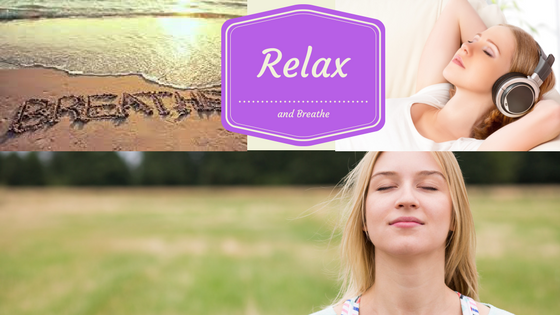Are you aware of your own breathing patterns? If so, you are a step ahead of many others and you may find it easier to learn how to relax and cope with migraines and headaches.
Knowing when there are changes in your breathing patterns can help you relax. For example, changes in emotion often disrupt your breathing patterns. If you are a person who tends to be anxious, you might find yourself holding your breath without even being immediately aware of that change. On the other hand, some people who are depressed tend to sigh and speak in a low-pitched voice as they exhale.
You may not always be aware of your breathing patterns, but now I have mentioned them, perhaps the next time this happens you will be more aware of what is going on and move quickly to the relaxation portion.
Relaxation Exercises.
First of all, find a quiet location that is free of distractions and a comfortable body position. As hard as it sound, try to block out worries and distracting thoughts.
Rhythmic breathing: If you find that your breathing is short and hurried, slow it down by taking long, slow breaths. Inhale slowly then exhale slowly. Count slowly to five as you inhale, and then count slowly to five as you exhale. Pay attention to how your body naturally relaxes as you are breathing out. When you recognize this change, it will help you to relax even more.
Deep breathing: Imagine a spot just below your navel. Breathe into that spot, filling your abdomen with air. Let the air fill you from the abdomen up, then let it out, like deflating a balloon. With every long, slow exhalation, you should feel more relaxed. (This breathing exercise is actually one I learned when I was taking voice lessons. I started them at age 10 and then sang for many, many years, always practicing this type of breathing to help me project and be relaxed.)
Mental imagery relaxation: Mental imagery relaxation, or guided imagery, is a proven form of focused relaxation. It helps create harmony between the mind and body. Guided imagery helps create calm, peaceful images in your mind — a “mental escape.”
Note: It’s important to identify your self-talk –, what are you telling yourself about what is going on with your migraines or headaches. It you can identify negative self-talk, then you can develop healthy, positive self-talk. These types of “affirmations” can help you counteract negative thoughts and emotions.
Let me give you some examples of some positive statements you can practice:
• I’m letting go of the things I can’t control
• There’s nothing I can’t handle
• I am healthy, vital, and strong
• I am getting stronger every day
• I am happy and loved
• All my needs are met
• I am completely and utterly safe
Visualized breathing: Find a comfortable place where you can close your eyes, and combine slowed breathing with your imagination. Picture relaxation entering your body and tension leaving your body. Breathe deeply and naturally. Visualize your breath coming into your nostrils, going into your lungs and expanding your chest and abdomen. Then, visualize your breath going out the same way. Continue breathing, but each time you inhale, imagine that you are breathing in more relaxation. Each time you exhale imagine that you are getting rid of a little more tension.
Progressive muscle relaxation: Let your thoughts dwell on yourself and your breathing. Take a few deep breaths, exhaling slowly. Mentally scan your body. Notice your headache/migraine, if you have one, and other areas of your body where you feel tense or cramped. Quickly loosen up these areas. Let go of as much tension as you can. Rotate your head in a smooth, circular motion a few times (as long as it doesn’t cause pain). Roll your shoulders forward and backward several times. Let all of your muscles completely relax. Think of something really pleasant for a few seconds. Take another deep breath and exhale slowly. After doing this, you should feel relaxed.
Relax to music: This can be a very powerful way to relax. You can simply listen to the music and begin to feel more relaxed, or you can combine relaxation exercises with your favorite music in the background. Select the type of music that lifts your mood or that is soothing or calming to you. Some people find it easier to relax while listening to specially designed relaxation music, such as some of the apps you can download to your phone or tablet. These types of apps provide music and relaxation instructions.
If you find yourself becoming tense, stressed, or feel the onset of a headache or migraine, you may find some of these techniques very helpful.
Some of these techniques I practice on a daily basis. They have helped as a migraine preventative for me.
We all react in a different way to relaxation and breathing techniques, so find the one that is most effect for you. If you find it especially helpful, don’t just practice that relaxation technique when you have a headache or migraine, try doing it on a daily basis and let it act more as a preventative measure for you too.
During this busy time of year, the more opportunities you take to relax, the more easily you will sail through the season without headaches and migraines getting in your way!


